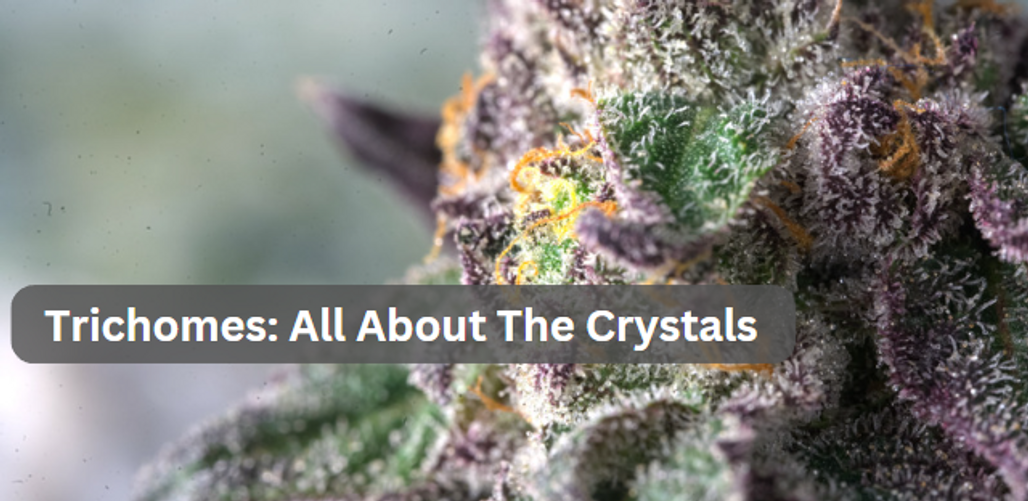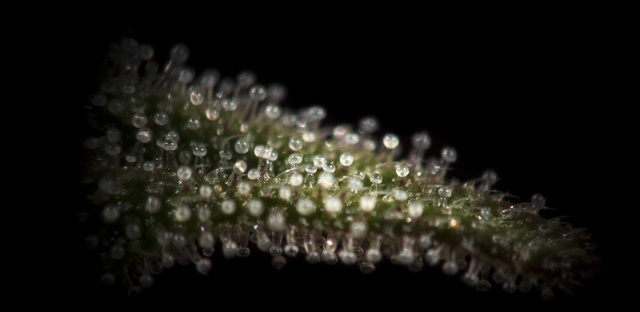
The Enigmatic World of Hemp Flower Trichomes: Unraveling the Mystery
Posted by SN on Apr 07, 2023
Shop our store.
Jump over to our homepage and check out our selection of legal THC, CBD and other cannabis products.
A Comprehensive Guide to Understanding Trichomes
Introduction:
The fascinating world of hemp flower trichomes is a topic worth exploring. These tiny, resinous structures play a crucial role in the hemp plant's growth, reproduction, and potency. Understanding trichomes not only provides a wealth of knowledge about CBD flower but also serves as a tool for evaluating quality and effectiveness. In this blog post, we'll delve into why trichomes form, their benefits, how they compare to similar structures in nature, and more.
What are Hemp Flower Trichomes?
Trichomes are tiny, hair-like structures that grow on the surface of the hemp plant, primarily on the flowers and leaves. They appear as small, crystalline, mushroom-shaped protrusions that house a treasure trove of cannabinoids, terpenes, and flavonoids - the compounds responsible for the therapeutic and aromatic properties of the hemp plant.
Why do Hemp Trichomes Form?
Trichomes serve several essential functions in the hemp plant's life cycle, including:
Protection: They act as a natural defense mechanism against pests and herbivores, deterring them with their bitter taste and strong aroma. This protects the plant from being consumed and ensures its survival.
UV Radiation Shield: Trichomes protect the hemp plant from harmful UV radiation by reflecting sunlight, which helps to prevent cellular damage and support healthy growth.
What are Trichomes Good For?
Trichomes are essential for the production of various beneficial compounds in the hemp plant. Here are some of the advantages they provide:
Cannabinoids: Trichomes are the primary source of cannabinoids such as CBD (cannabidiol), THC (tetrahydrocannabinol), and many others. These compounds interact with the human endocannabinoid system, offering potential therapeutic effects for various conditions.
Terpenes: These aromatic compounds are responsible for the distinct scent of hemp and other plants. Terpenes play a crucial role in the overall therapeutic profile of hemp, as they may interact synergistically with cannabinoids to enhance their effects - a phenomenon known as the entourage effect.
Flavonoids: Trichomes produce flavonoids, which contribute to the color, flavor, and potential health benefits of the hemp plant. Some flavonoids exhibit antioxidant and neuroprotective properties.

Are There Comparable Structures in Nature?
Trichomes are not unique to hemp plants; they can be found on various other plants, including tomatoes, nettles, and carnivorous plants like sundews. In some cases, these trichomes also serve as a defense mechanism or help with nutrient absorption. However, their composition and functions differ from those of hemp trichomes.
Do Trichomes Indicate the Quality of a Strain?
While trichomes are not the sole indicator of a strain's quality, they can provide valuable information regarding the potency and cannabinoid content of a hemp flower. A higher density of trichomes may suggest that the flower has a more abundant concentration of cannabinoids, terpenes, and other beneficial compounds. However, it's essential to consider additional factors, such as the strain's genetics, cultivation techniques, and harvest time, to determine the overall quality and effectiveness of a hemp strain.
Is it the Same as Kief?
Kief refers to the resinous trichomes that have been separated from the hemp flower, usually by using a grinder or a pollen screen. Kief is essentially a concentrated form of trichomes, containing a higher percentage of cannabinoids and terpenes than the flower itself. While trichomes are the source of kief, they are not the same thing. Kief is often used to make hash or infused into other cannabis products, such as edibles and topicals, to increase potency and enhance the therapeutic effects.
Harvesting and Processing Trichomes
Trichomes play a crucial role in determining the ideal harvest time for hemp plants. As the plant matures, trichomes transition through different stages of development, which can be observed through their color and appearance. Immature trichomes are usually transparent and develop a milky, opaque color as they mature. Eventually, they may turn amber, indicating that the plant is past its peak potency.
Harvesting hemp at the right time ensures that the trichomes contain the highest concentration of cannabinoids and terpenes. Once the flowers are harvested, they must be carefully processed to preserve the delicate trichomes and their valuable contents. Proper drying and curing techniques are essential for maintaining the quality of the trichomes and, consequently, the hemp flower's potency and effectiveness.
Final Thoughts
Hemp flower trichomes are fascinating structures that play a vital role in the plant's life cycle and its therapeutic potential. Understanding their functions and importance can help consumers better evaluate the quality of a strain and make informed choices about CBD flower products. While trichomes are not the only factor to consider when assessing the quality of a strain, their presence, density, and appearance can provide valuable information about the hemp plant's cannabinoid and terpene profile. So, next time you examine a hemp flower, take a moment to appreciate the intricate world of trichomes and their remarkable contributions to the plant's many benefits.
Popular Products
Check out these customer favorites.
